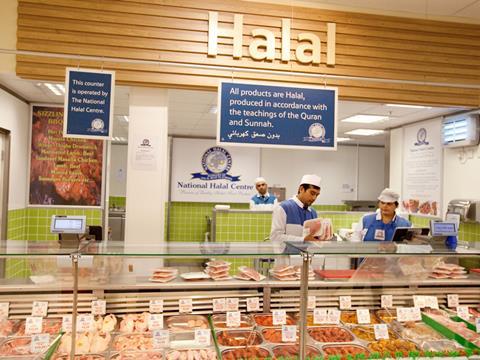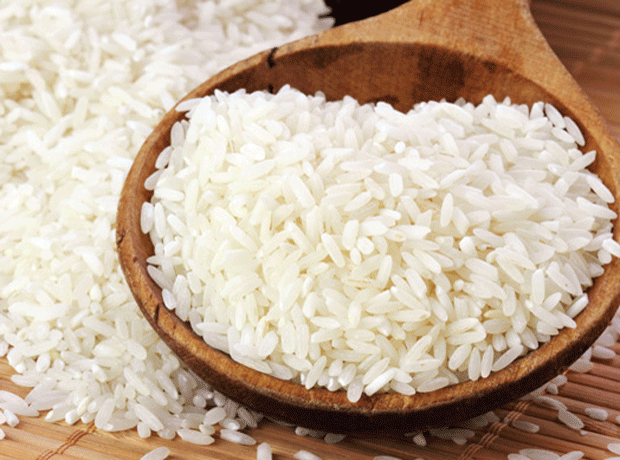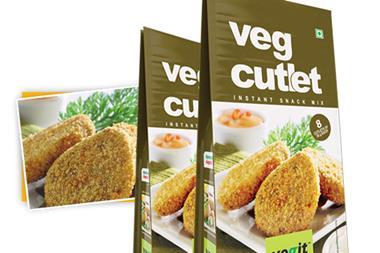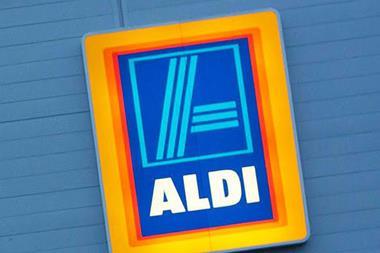What does the halal meat sector need to do to improve standards, enhance its image and stimulate demand? The Grocer invited four experts to assess the regulatory and business challenges…
The panel:
Rizvan Khalid: senior director, Euro Quality Lambs
Steve Ewels: Managing director, 1 Stop Halal
Phil Hadley: Director of supply chain development, Eblex
Andrew Opie: director of food and sustainability, British Retail Consortium
Public debate about halal meat in the UK can often be highly emotionally charged. Why do you think that is, and what can the supply chain do to ensure a more constructive debate?
Rizvan Khalid: Halal has been used as a pretext by some for xenophobia. There has been an inaccurate narrative of inter-mixing and generalising ‘halal’ with ‘welfare’ when FSA statistics demonstrate 80% of UK halal production is pre-stunned. Stakeholders need to be more aware about using the right terminologies.
Steve Ewels: It’s important all stakeholders in the supply chain work together to provide better clarity for consumers and interested parties. It is unfortunate a lot of the press about halal is often on the negative side, but that just means the whole supply chain needs to work twice as hard at communicating the truth.
Andrew Opie: The assumption is that all halal slaughter is of non-stunned animals. This presumption can lead to consumers feeling they are not being fully informed. The way we counter this is by being very clear about the meat consumers buy. All BRC members have been crystal clear that all own-brand meat they sell has come from animals stunned before slaughter.
Phil Hadley: The public perception is often derived from a lack of understanding driven by media portrayals. Industry-wide, all parties should seek to be transparent and clarify the factual position.
What do you think is currently the single most problematic aspect about halal meat production in the UK, and how do you propose to tackle it?
PH: There is a lack of uniformity of standards and requirements not only in the UK but also overseas. This has led to confusion on equivalence and hampers both domestic trade and exports. Ideally, a shared view on halal certification that facilitates trade would address this, but it is a complex situation with many parties’ interests to be considered. Eblex has considered the development of Halal Quality Marks, but failed to gain industry consensus when we consulted on this in 2013.
RK: The biggest problem is some meat producers doing halal with incorrect methods (eg captive-bolt stunning) and the lack of a publicised framework for consumers to tell easily what is reversible stunned and what is slaughter-without-stunning. There needs to be several robust halal standards that would then give all consumers the information they need.
SE: I think the biggest problem today is products labelled halal but mechanically slaughtered. This method of slaughter is fundamentally rejected by the two leading UK halal accreditation bodies. It’s a particular problem in the frozen market. Our brands only use meat ‘hand slaughtered’ by a Muslim.
“Muslims in the UK are looking for halal British dishes such as cottage pie. Convenience and eating out are major trends”
In your view, are animal welfare standards in halal meat production in the UK lower than in conventional UK meat production?
SE: We actually have a higher level of inspection than conventional meat production. In our poultry abattoir we have an on-site vet like conventional meat suppliers. We also have two independent halal inspectors who govern all our production.
RK: There is a significant body of Islamic scripture promoting compassion towards animals. If the question is about animal welfare issues during slaughter-without-stunning meat production then I would say for sheep there is not so much difference. Sheep are anatomically the best animals to slaughter without stunning. People forget mis-stuns are a reality and are painful and not even the FSA can provide accurate mis-stun information, which shows data collection in this whole area is woefully inadequate. We also forget that during its lifetime we subject sheep to ear-tagging, castration, tail-docking etc and these are observationally longer in pain intensity and duration. Further research is needed to cross-compare welfare ‘insults’ during an animal’s life and death. Welfare is for life and not just for slaughter. There is more welfare risk in cattle, which is least consumed by Muslims, due to anatomical differences but these can be minimised through best practice techniques and further R&D.
PH: The legislation specifically allows a derogation from the requirement to stun for the purpose of producing meat for religious purposes. The welfare of this is monitored closely by official veterinarians in meat plants as one of their key roles.
AO: The only difference to the welfare standards is in some halal certified schemes where stunning is not permitted; those governing rearing of the animal should be no different.
Are current labelling requirements for halal meat adequate? How would you like them improved?
AO: Where retailers sell halal meat, produced by third parties, it is clearly labelled. This means consumers will always know that if they buy non-halal meat it is from animals that have been stunned before slaughter. It also means those consumers choosing halal can be assured meat has been certified right through the chain. We are not calling for additional labelling - that is for government - but if there were more interest around welfare at slaughter we would support only labelling meat from animals not stunned.
PH: The labelling of halal products could be improved to ensure consumers have an appropriate amount of information. At present this is a business decision, but it could be extended to include slaughter method. Eblex again considered a stun/non-stun quality mark in 2013, but did not achieve universal agreement. Some commercial companies have now begun to move in this direction, offering different brands to attract consumers with clear preferences for method of slaughter. The EU recently consulted on consumer perception of labelling in the sector. The results may inform the debate further.
SE: This seems to be very high on the agenda of multiple retailers that are looking to drive standards within the industry. In direct response to this, our National Halal fresh pre-pack range is the first brand within the UK to confirm the method of slaughter of front of pack. It is also accredited by HMC (Halal Monitoring Committee). I know some of the halal authorities would like to see equivalent ‘method of kill’ on all products in the supply chain - both mainstream and kosher etc. It’s a balance between genuine information and information overload. Brands have a very big part to play.
RK: If a product is labelled halal I would like to know whether it was done without stunning or, if stunned, what type of stun method was used and whether it was mechanically slaughtered (for poultry). Not all stun methods are halal, eg captive-bolt stunning, but some are getting away with it by simply calling it ‘stunned’ halal. This is undermining confidence in reversible stunned halal. Similarly, mechanical slaughter by a blade is unacceptable as the prayer has not been said on each bird. I am wary of adding too many labels on the packet as they can add complexity and increase costs without much added value. If a separate welfare label is introduced it would need to be for whole-of-life rather than just at slaughter. A good welfare labelling model is the 5-step Global Animal Partnership, which attempts to objectively assesses welfare on a five-point scale at each point of its life and then comes out with a final number on the pack when the meat is sold.
Different certification bodies disagree about the standards required for halal meat production. Has the time come for a universal ‘UK halal’ standard?
PH: A universally acceptable halal standard would go a long way to bringing the industry together. However, it remains challenging due to the commercial pressures and differing views on standards and methods of production.
RK: There are efforts to harmonise halal standards globally but although the number of standards will converge there will not be one standard globally. In halal there are basic obligatory criteria and then recommended criteria. Some certifiers have standards set religiously higher than others, hence that is what is causing confusion among industry. Some unscrupulous certifiers will set standards lower than halal requirements and there is a push towards global accreditation of certifiers that will eventually weed out the bad apples.
SE: Uniformity could be helpful, but at the end of day we should let the consumer decide. Whether it’s a brand or an accreditation body - each have set criteria to which they work to.
“Further research is needed to cross-compare welfare ‘insults’ during an animal’s life and death”
What are the key changes in consumption trends currently shaping the halal meat market?
RK: Chicken and lamb are traditionally eaten the most by halal consumers. Beef, and particularly beef steak and burgers, is gaining more in popularity. British Muslims are increasingly looking for halal British cuisines such as a shepherd’s pie, cottage pie etc. Convenience and eating out are major trends.
SE: The market is seeing rapid growth - over 100% in the last 12 months in retail. Retailers are recognising that core meat fixtures in reality are over-spaced and that halal represents an opportunity to grow sales in a flat and difficult market. Chicken dominates, but red meat is increasingly popular and developing. We are also seeing the growth of convenience products. Last week, our Shazan’s brand launched a new range of ‘cook in bag’ chicken.
PH: Our consumer research has demonstrated a growing appetite for beef products and convenience formats, especially among younger consumers. In contrast, this research also highlights high demand among halal consumers for traditional cuts such a leg, chops and mince, generally purchased fresh.
How can mainstream supermarkets and suppliers cater better towards consumers seeking halal meat?
PH: Retailers recognise the growing demand and are taking opportunities to improve their halal offer, be this through dedicated, clearly marked shelf space, in-store butchery or more visual labelling. Ranges are widening as a result of the increased demand and a better understanding of consumer needs.
AO: Major retailers must ensure they have a range of clearly labelled halal products to meet consumer demand. Where there is sufficient demand, retailers have also introduced specialist halal butcher’s counters alongside pre-packed products.
RK: There needs to be better marketing during Ramadan and Eid to increase awareness of the choices available for Halal consumers. There also needs to be an education campaign to explain the different halal standards available for both Muslim Land non-Muslim consumers.
SE: The halal market is still vastly underdeveloped in UK supermarkets, therefore accessibility is the number one priority. Clear segregation and signage are crucial. It’s a very specialist market, requiring specialist skills and specialist dedication.




















No comments yet